Riku Ogata
One-class Damage Detector Prototyping Fully-Convolutional Data Description for Prognostics
Mar 18, 2023Abstract:It is important for infrastructure managers to maintain a high standard to ensure user satisfaction during a lifecycle of infrastructures. Surveillance cameras and visual inspections have enabled progress toward automating the detection of anomalous features and assessing the occurrence of the deterioration. Frequently, collecting damage data constraints time consuming and repeated inspections. One-class damage detection approach has a merit that only the normal images enables us to optimize the parameters. Simultaneously, the visual explanation using the heat map enable us to understand the localized anomalous feature. We propose a prototype to automate one-class damage detection using the fully-convolutional data description (FCDD). We also visualize the explanation of the damage feature using the up-sampling-based activation map with the Gaussian up-sampling from the receptive field of the fully convolutional network (FCN). We demonstrate it in experimental studies: concrete damage and steel corrosion and mention its usefulness and future works.
VAE-iForest: Auto-encoding Reconstruction and Isolation-based Anomalies Detecting Fallen Objects on Road Surface
Mar 02, 2022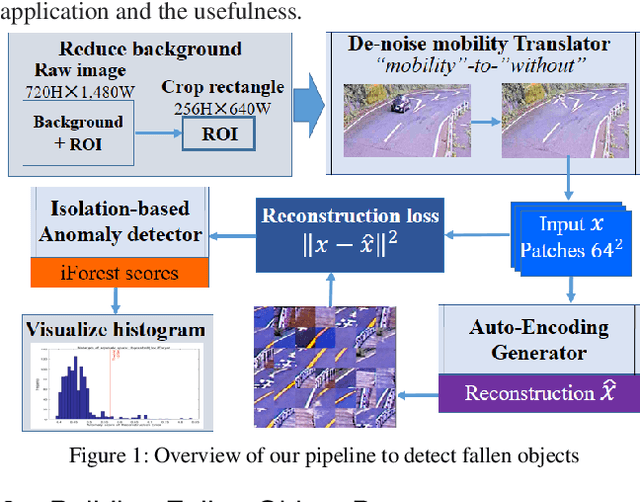

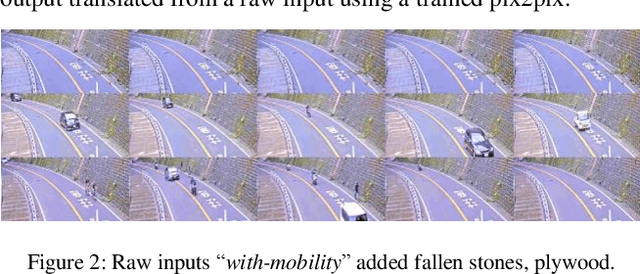
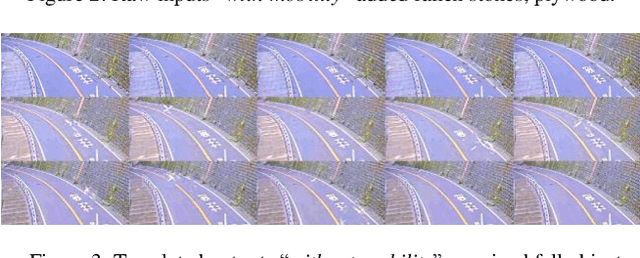
Abstract:In road monitoring, it is an important issue to detect changes in the road surface at an early stage to prevent damage to third parties. The target of the falling object may be a fallen tree due to the external force of a flood or an earthquake, and falling rocks from a slope. Generative deep learning is possible to flexibly detect anomalies of the falling objects on the road surface. We prototype a method that combines auto-encoding reconstruction and isolation-based anomaly detector in application for road surface monitoring. Actually, we apply our method to a set of test images that fallen objects is located on the raw inputs added with fallen stone and plywood, and that snow is covered on the winter road. Finally we mention the future works for practical purpose application.
L2-norm Ensemble Regression with Ocean Feature Weights by Analyzed Images for Flood Inflow Forecast
Dec 06, 2021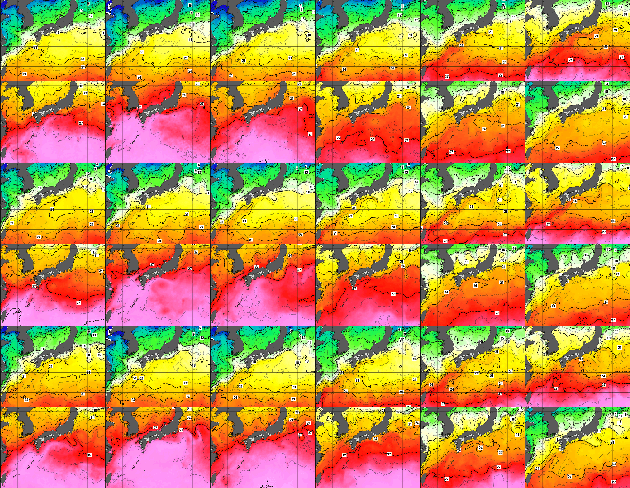

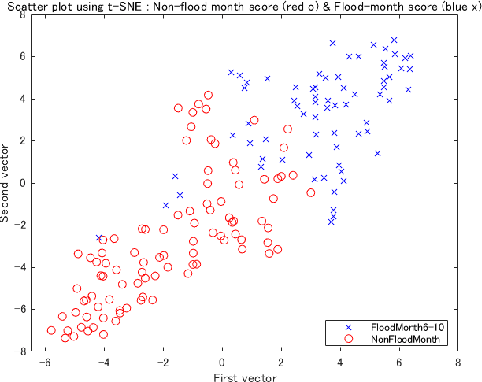
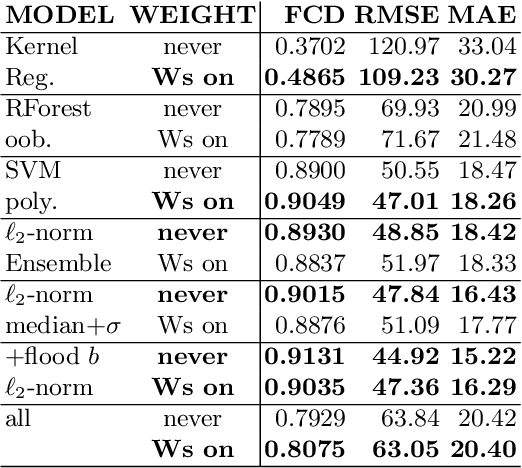
Abstract:It is important to forecast dam inflow for flood damage mitigation. The hydrograph provides critical information such as the start time, peak level, and volume. Particularly, dam management requires a 6-h lead time of the dam inflow forecast based on a future hydrograph. The authors propose novel target inflow weights to create an ocean feature vector extracted from the analyzed images of the sea surface. We extracted 4,096 elements of the dimension vector in the fc6 layer of the pre-trained VGG16 network. Subsequently, we reduced it to three dimensions of t-SNE. Furthermore, we created the principal component of the sea temperature weights using PCA. We found that these weights contribute to the stability of predictor importance by numerical experiments. As base regression models, we calibrate the least squares with kernel expansion, the quantile random forest minimized out-of bag error, and the support vector regression with a polynomial kernel. When we compute the predictor importance, we visualize the stability of each variable importance introduced by our proposed weights, compared with other results without weights. We apply our method to a dam at Kanto region in Japan and focus on the trained term from 2007 to 2018, with a limited flood term from June to October. We test the accuracy over the 2019 flood term. Finally, we present the applied results and further statistical learning for unknown flood forecast.
 Add to Chrome
Add to Chrome Add to Firefox
Add to Firefox Add to Edge
Add to Edge